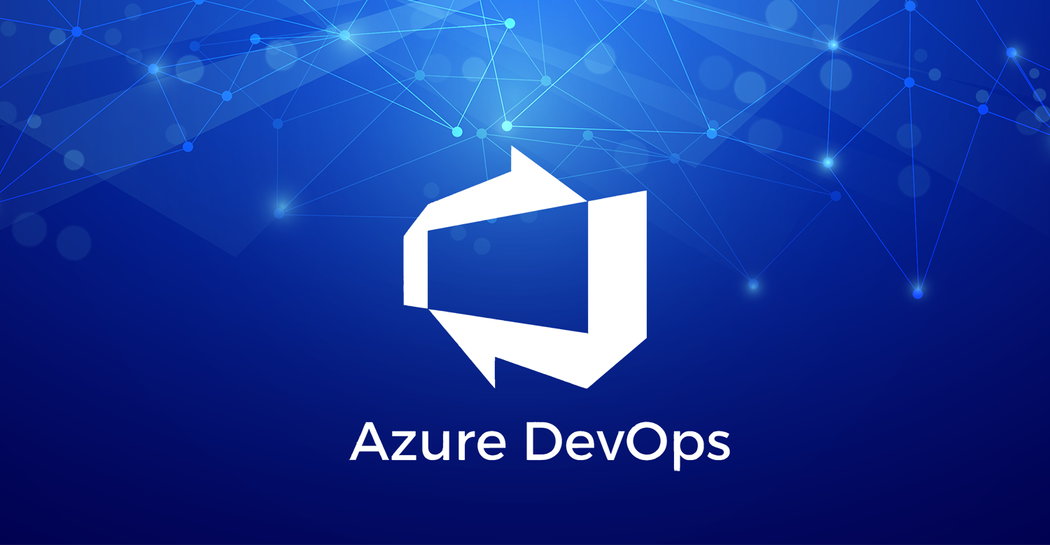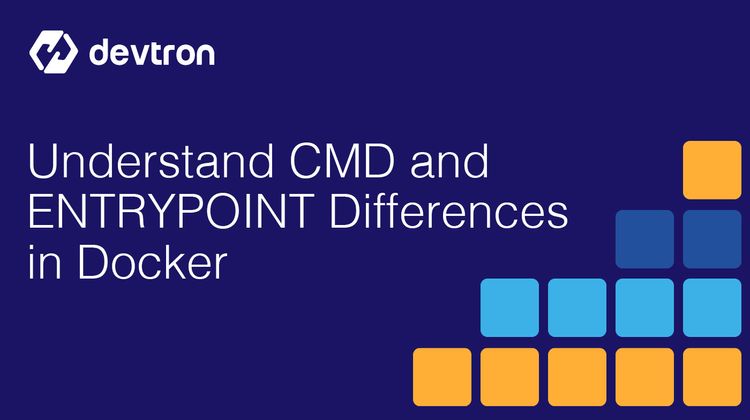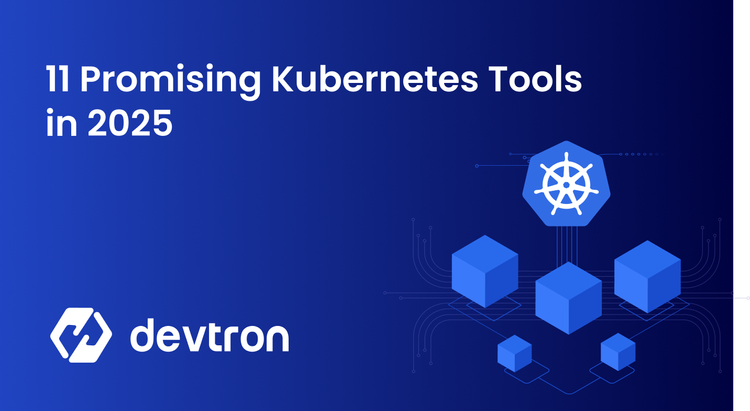DevOps combines practices, cultural philosophies, and tools that simplify the functioning of development (DEV) and operations (Ops) teams. It aims to empower teams and organizations to develop and ship secure software solutions more efficiently and faster. Azure DevOps is a platform that brings the tools and practices required by developers, project managers, and contributors to develop and ship software over a single pane of glass.
In this blog, we will dive deep into Azure DevOps and its offerings in building, deploying, and deploying applications over Kubernetes. Also, we will look at the better alternative for Azure DevOps i.e. Devtron.
Introduction to Azure DevOps?
Azure DevOps (formerly Visual Studio Team Services—VSTS) is a platform for organizations to manage the development and delivery of their software.
Azure DevOps brings the tools and services required by the Developer and DevOps teams under one roof, that allows them to manage their source code, test, builds, and deployments.
- Azure DevOps promotes the DevOps philosophy by implementing best practices that help teams create and improve their products more effectively at scale.
- Its integrated approach enables seamless collaboration and automation throughout the software development lifecycle.
- Microsoft provides Azure DevOps to teams operating over an on-premise server through Azure DevOps Server. This on-premise version of Azure DevOps offers the same core services while giving organizations complete control over their data and infrastructure.
- The Azure DevOps Server enables teams to maintain their development workflow within their secured network environment.
Azure DevOps Services
Azure DevOps provides a set of services for teams, these services help them to collaborate, plan, and accelerate their software development and deployments. Let’s look at some key Azure DevOps Services and what they offer:
What are Azure Boards?
Azure Boards are web-based dashboards for teams to plan, track, and collaborate efficiently across the software development process. These dashboards come with multiple tools that help developers streamline workflows, enhance visibility for project status, manage work items for individual team members, and provide built-in support for Scrum planning, Kanban dashboard, and Agile Methodology.
- Work Items, Boards, Backlogs, Sprints, Queries, Delhivery Plans, and Analytics view are the key tools and features available in Azure Boards to help manage development processes.
- These dashboards are equipped with multiple tools that help developers streamline workflows and enhance project status visibility, making tracking progress easier.
- Azure Boards provide built-in support for Scrum planning, Kanban dashboard, and Agile Methodology while allowing teams to manage work items for individual team members.
What are Azure Repos?
Azure Repos is the version control tool that helps developers to manage their application code. Through Azure Repos, Azure DevOps facilitates the version control system which can be leveraged to track the changes in code over time.
- Azure Repos maintains the history of all code changes, providing developers with the ability to recall old code changes whenever needed, making it an essential tool for code management and version tracking.
- When working with large teams, Azure Repos serves as a centralized repository for code and changes, while also benefiting single developers by helping them organize their codebase as they fix bugs and develop new features.
- Azure Repos offers two distinct types of version control systems: Git, which is a distributed version control system, and Team Foundation Version Control (TFVC), which functions as a centralized version control system.
What are Azure Pipelines?
Azure Pipelines revolutionizes application workflow by providing automated building, testing, and deployment capabilities for any target destination.
- At its core, Azure Pipelines integrates three crucial stages: Continuous Integration (CI) for code building, Continuous Testing for test case execution, and Continuous Deployment (CD) for efficient code delivery to target destinations.
- This CI/CD workflow within Azure Pipelines ensures teams maintain consistency, code quality, and application stability throughout the development process.
- Azure Pipelines offers comprehensive support for all major languages and platforms, while seamlessly integrating with various version control systems including Azure Repos Git, GitHub, and TFVC.
What are Azure Test Plans?
Azure Test Plan comes with intuitive tools for teams to help improve code quality and collaborate more efficiently.
- This web-based test plan offers comprehensive capabilities including manual testing, automated testing, traceability, and tracking feedback from relevant stakeholders.
- Test plans serve as a centralized hub for test management, allowing teams to systematically plan testing activities and streamline quality assurance processes.
- By maintaining clear communication between teams, the Azure Test Plan helps organizations deliver reliable applications while ensuring comprehensive quality control throughout the development lifecycle.
What are Azure Artifacts?
Azure Artifacts allows developers to share and consume all required code dependencies through a unified platform.
- Azure Artifacts enables developers to create, share, and manage software packages with team members, across organizations, or even make them publicly available.
- Through Azure Artifacts, developers can share and consume packages from established registries like NuGet.org and npmjs.com, providing flexible access to dependencies.
- The platform offers comprehensive support for various package types, including npm, NuGet, Maven, and Python packages, making it versatile for different development needs.
What is Azure DevOps Server?
Azure DevOps Server allows you to self-host all the DevOps Services including Azure Boards, Pipelines, Repos, Test Plans, and Artifacts.
- Azure DevOps Server provides organizations with the ability to self-host all the major DevOps services within their own infrastructure.
- Teams operating in secured network environments can particularly benefit from Azure DevOps Server, as it allows complete control over their development environment.
- The server includes full access to Azure Boards, Pipelines, Repos, Test Plans, and Artifacts, providing a comprehensive self-hosted DevOps solution.
Azure DevOps Pipeline: Example Implementation of Azure Pipelines for Kubernetes
In the scenario from the above image, you can visualize the workflow where developers write code and commit it to Azure Repos. This is followed by a series of automated processes facilitated by Azure Pipelines: building and testing the application. If an Azure Kubernetes Service (AKS) cluster does not already exist, it will be provisioned automatically. If the AKS cluster is already in place, the application image is pushed to Azure Container Registry (ACR). Subsequently, Azure Pipelines facilitates the application's deployment to AKS. Additionally, Application Insights is integrated to establish a feedback loop, enabling continuous monitoring and improvement of the application.
Pros and Cons of Azure DevOps
Let's summarize our exploration of Azure DevOps and its Kubernetes implementation:
The Azure DevOps by Microsoft is a generic DevOps product that aims to streamline the software development cycle for teams by providing multiple tools and services for planning, developing, testing, building, and deploying applications. When managing applications over Kubernetes, Azure DevOps lacks certain capabilities and falls short of providing a robust workflow for Kubernetes app deployment and management.
Azure DevOps Alternative: Devtron
Devtron is an open-source platform for managing Kubernetes applications. It is an alternative to Azure DevOps for managing applications and Kubernetes clusters. Being a Kubernetes native platform Devtron offers perfectly tailored solutions for your Kubernetes applications and clusters. Devtron provides best practices of DevOps ecosystems for teams to develop, deploy, and manage applications over Kubernetes. Let’s take a better look at these features of Devtron and understand how they help Developers and DevOps teams:
Modern Kubernetes Dashboard
The Modern Kubernetes Dashboard of Devtron provides an intuitive graphical interface with advanced features, giving you 360-degree visibility across multiple Kubernetes clusters while enhancing operational efficiency. Kubernetes Dashboard by Devtron.
Robust CI/CD Workflows
Devtron allows you to configure robust CI/CD workflows for building, testing, and deploying your applications to Kubernetes. Through the intuitive GUI of Devtron, developers can quickly set CI/CD pipelines which include best practices to maintain production stability like Mandatory plugins (for tasks like code scanning), vulnerability scanning, Pre/Post stages, for controlled deployments to critical environments Devtron has approval based deployments and Deployment windows like features.
Application Lifecycle Management
Devtron helps you manage your application lifecycle from the coding stage to deployment and day 2 operations (managing application post-deployment). Devtron provides you with a logical separation of Kubernetes workloads for each application which helps teams to debug or troubleshoot quickly. When you need to push newer versions of the application you can leverage advanced Kubernetes deployment strategies which helps you to perform zero downtime upgrades. For managing your application configurations and secrets Devtron provides advanced options like lock configurations and approval-based configuration updates.
Robust Fined-Grained RBAC
Devtron offers a robust, fine-grained Role-Based Access Control (RBAC) system. Through an intuitive GUI, administrators can configure detailed permissions down to individual Kubernetes resources. This ensures that users have the appropriate level of access while maintaining security and compliance across the platform.
DevSecOps
Devtron integrates DevSecOps practices into the development lifecycle, ensuring that security is a fundamental aspect of the software development process. By embedding security measures like vulnerability scanning, and security policies throughout the CI/CD workflows, teams can identify vulnerabilities early and maintain compliance without sacrificing speed or agility.
Conclusion
In conclusion, Azure DevOps stands as a single comprehensive platform that provides essential tools to streamline the software development lifecycle. Capabilities like project management (Azure Boards), continuous integration and deployment (Azure Pipelines), support for application testing, and feedback loop help teams accelerate their workflows. However, Azure DevOps falls short when managing cloud-native applications or Kubernetes clusters, it lacks robust integration capabilities with supporting cloud-native technologies. Whereas, Devtron an open-source Kubernetes platform offers features that are precisely tailored for Kubernetes cluster and application management. Devtron also implements the best practices from the DevOps landscape to enhance their operational efficiency and maintain robust application lifecycles in a cloud-native environment.
FAQ
What is Azure DevOps used for?
Azure DevOps is a set of development tools and services for planning, developing, testing, and deploying software. It supports the full software development lifecycle (SDLC) and enables DevOps practices like continuous integration and continuous delivery (CI/CD).
What are the 5 Components of Azure DevOps?
1. Azure Boards – Work tracking (backlogs, Kanban boards, and sprints).
2. Azure Repos – Git repositories for source code management.
3. Azure Pipelines – CI/CD for automating build, test, and release processes.
4. Azure Test Plans – Manual and exploratory testing tools.
5. Azure Artifacts – Package management for sharing and managing code dependencies.
Is Azure DevOps Agile or Scrum?
Azure DevOps supports Agile, Scrum, and Kanban methodologies. You can customize it to fit your team's workflow.
Can I use Azure DevOps CI with Devtron?
Yes, you can. While Azure DevOps can handle your CI (Continuous Integration) processes, you can use Devtron for deployment and application management. Devtron integrates seamlessly with external CI tools, allowing you to leverage its powerful GitOps-based deployment model, environment management, and other advanced deployment capabilities.
How does Azure DevOps help with Continuous Integration and Continuous Delivery (CI/CD)?
Azure DevOps simplifies CI/CD by automating build, test, and deployment processes using Azure Pipelines. This ensures faster development cycles, higher code quality, and more reliable deployments by automatically integrating and delivering changes to production environments.







